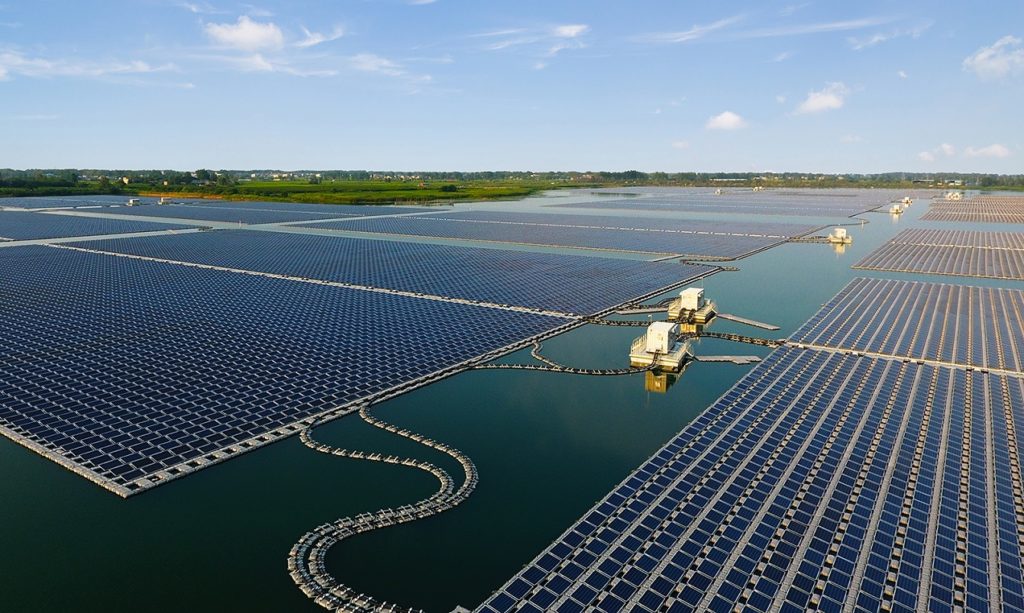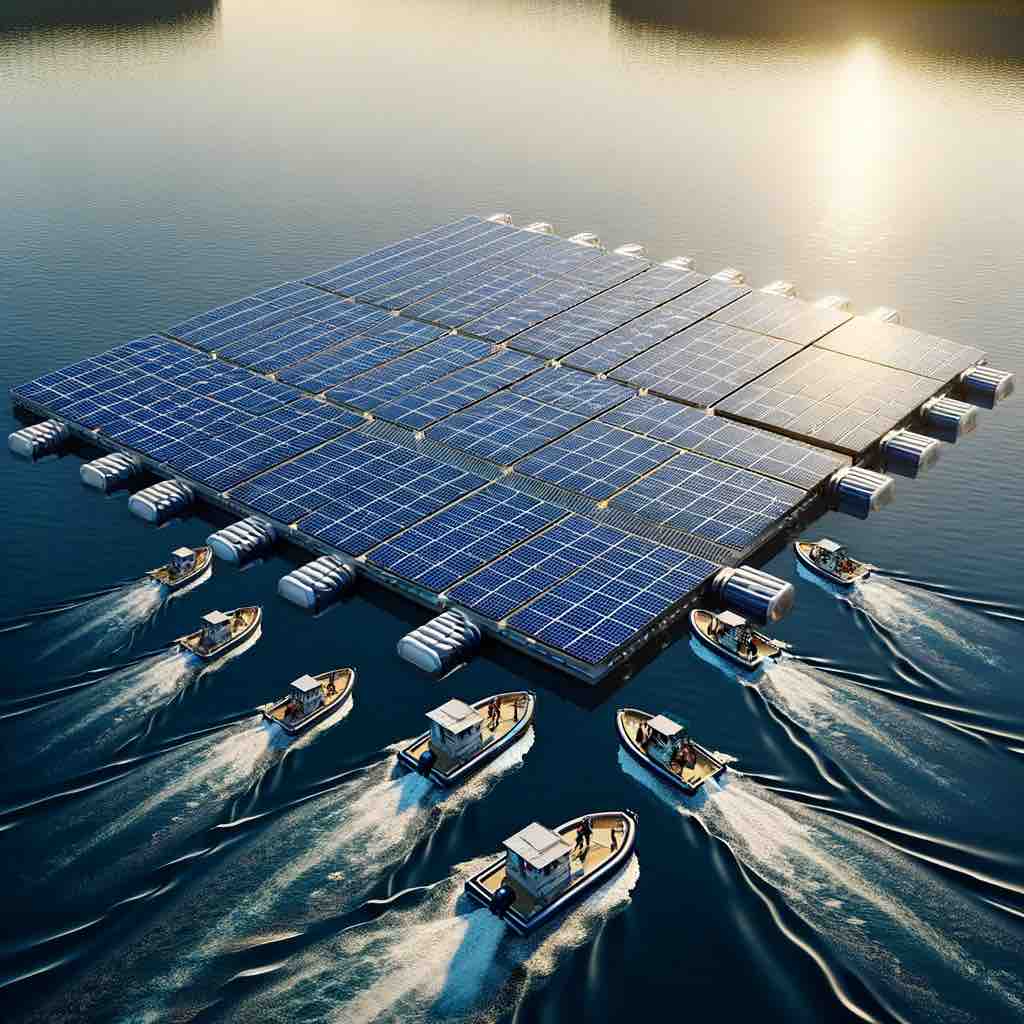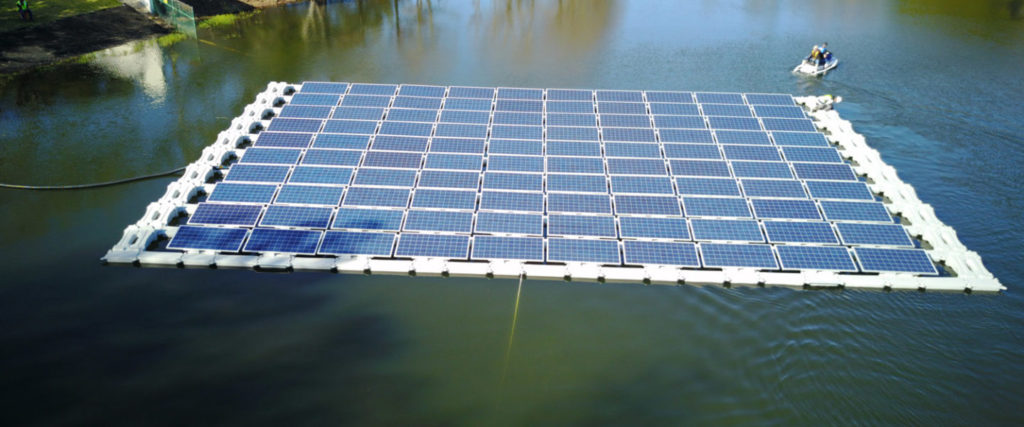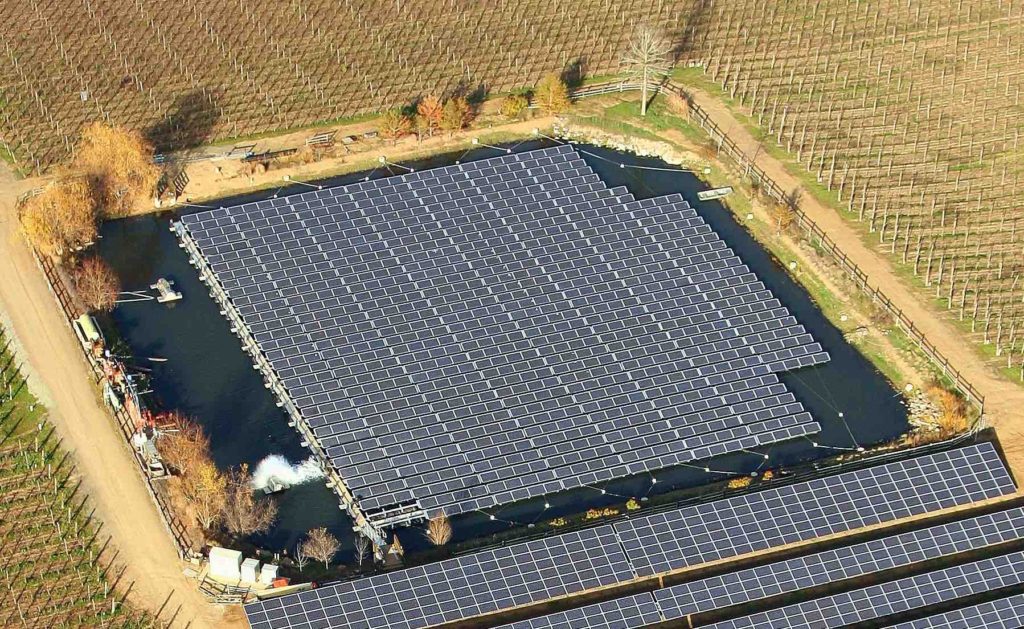Cover photo: https://www.weforum.org
The point of using solar energy is to reduce our carbon emissions, stop our dependence on fossil fuels, and, of course, lower our electricity bills.
Solar technology is becoming more widespread, from solar chargers for smartphones and panels installed on roofs to solar farms cropping up in many places.
However, as demand for renewable energy grows, so does our need for space to install more solar panels. But with agricultural land at a premium, where can we turn? Is it possible to capture solar energy without using any land at all?
The answer might float right on the surface of our lakes and reservoirs. Welcome to the world of floating solar plants. This innovative concept has its own benefits, challenges, and real-life applications.

Today’s Focus of Attention is reader-supported. We sometimes include products we think are useful for our readers. If you buy through links on this page, we may earn a small commission.
Let There Be Floating Solar Power Plants
Floating solar plants have become the latest trend in energy production. They generate electricity by harnessing solar power from panels floating on bodies of water such as lakes, dams, reservoirs, and oceans.
This is quite an amazing idea, as it maximises the use of any available space. Also, floating solar plants reduce evaporation and take advantage of the cooling effect of water, which increases the efficiency of the solar panels.
Switzerland is already taking advantage of this concept by installing large floating solar farms on a reservoir known as Lac des Toules.
An additional benefit is that FSPs can provide electricity to rural districts without affecting farmland or disrupting native habitats.
Advantages of Floating Solar Plants

In 2022, a report published in the journal iScience listed the key benefits of FSPs. Here they are:
- Floating solar arrays do not operate in habitable or productive areas, reducing land-use conflicts.
- They have the flexibility of being deployed on different water bodies, including reservoirs and hydropower dams.
- FSPs also save water by mitigating evaporation.
Challenges for Floating Solar PV Plants
Although FSPs hold tremendous potential to produce huge amounts of energy, engineers have to breach some barriers to install them.
The first one is an anchoring system. In contrast to the traditional ground-mounted modules, waterborne panels have to be attached to something while considering variations in the water level.
Harsh environmental conditions are the second hurdle. Subject to the location, ice, snow, turbulent waters, wind, and corrosion pose challenges to the performance, stability, and durability of the panels. Besides, difficulties related to access for maintenance and repairs.
And the last one is costs. Floating solar plants are more expensive to install because of the price of the floating structures and the specialised installation equipment.
Despite these obstacles, the industry is booming.

First Steps in the Floating Solar Panel Universe
The world’s earliest floating photovoltaic system appeared in Oakville, California, in 2008. The Far Niente Winery pioneered by installing 994 solar PV modules with an output of 477 kW onto 130 pontoons and floating them on the winery’s irrigation pond.

Then, in 2016, the Township of Sayreville, New Jersey, announced the installation of a floating solar array at its water treatment plant. The Sayreville system went online in 2019 with a capacity of 4.4 MW and was then described as the largest in North America.
Shortly after, in 2020, the US Department of Defence placed solar panels on Big Muddy Lake at Fort Bragg in North Carolina. And two years later, in May 2022, the station started operating.
The same year, in Cohoes, New York, Mayor William Keeler revealed the installation of 8,000 floating solar panels at the municipal water supply. He said that the modules, totalling 3.2 MW, would cover two-thirds of the 10-acre city reservoir.
A few kilometres away from NY, the company New Jersey Resources began the construction of an FSP at the Canoe Brook Water Treatment Plant in Short Hills. NJR stated that the plant’s 16,510 solar panels are already producing 8.9 MW. They send clean energy to 1,400 homes while generating enough electricity for the water sanitation facility.
When Solar Power Meets Hydropower
Indonesia
In 2022, Indonesia started the construction of one of the world’s largest floating solar photovoltaic plants in the Cirata Reservoir in West Java. It will be part of the Java-Bali grid, the core of the country’s electricity supply, which provides power to more than half of the population.
This PV installation is expected to generate around 145 MW, contributing to the nation’s clean energy transition.
With an annual production of 250 gigawatt hours, this facility will produce electricity from early morning to evening all year round.
In addition to Cirata, Indonesia also plans to develop another 60 floating PV installations to reach its target of producing 23% green energy by 2025.
The idea behind this plant is to complement the output from the Cirata hydroelectric complex, which will produce more power during the wet season while the FSP will do so in the dry period.
France
EDF has installed the first floating solar plant on the Lazer hydropower reservoir in the French Alps. This 20 MW plant will meet all the annual energy needs of about 12,500 people, thanks to its 50,000 PV panels.
Construction started in 2021 and has a projected lifespan of around 30 years.
This installation also combines solar and hydroelectric generation, with the solar plant helping during the summer months when the Lazer reservoir’s water is used for irrigation.
By bringing together these two renewable energy sources, France could reach 100 GW of solar power production while meeting its goal of being carbon neutral by 2050.
Floating Solar Plants Launched in 2024
Brazil
In January 2024, the state of Sao Paulo launched the first phase of the UFF Araucaria floating PV plant on the Billings Reservoir, the largest in Sao Paulo
With a capacity of 7 MW, the plant features 10,500 panels mounted on high-density polyethylene floats and will be the biggest in the country to operate commercially in distributed generators.
According to the Secretariat of Environment, Infrastructure, and Logistics, the final phase of the plant will deliver 75 MW of renewable energy capacity by the end of 2025.
Floating solar plants are more than just a novel idea; they’re a practical and powerful tool in the fight against climate change. Of course, it’s important to remember that they are a small piece of the whole puzzl
They need to be coupled with other renewable energy sources, such as hydrogen, wind, bioenergy, geothermal, and even nuclear power.
Reaching net zero by 2050 is an achievable goal.
But we must commit to reducing our carbon footprint and supporting technologies that could heal and secure a harmonious existence with the Earth.


